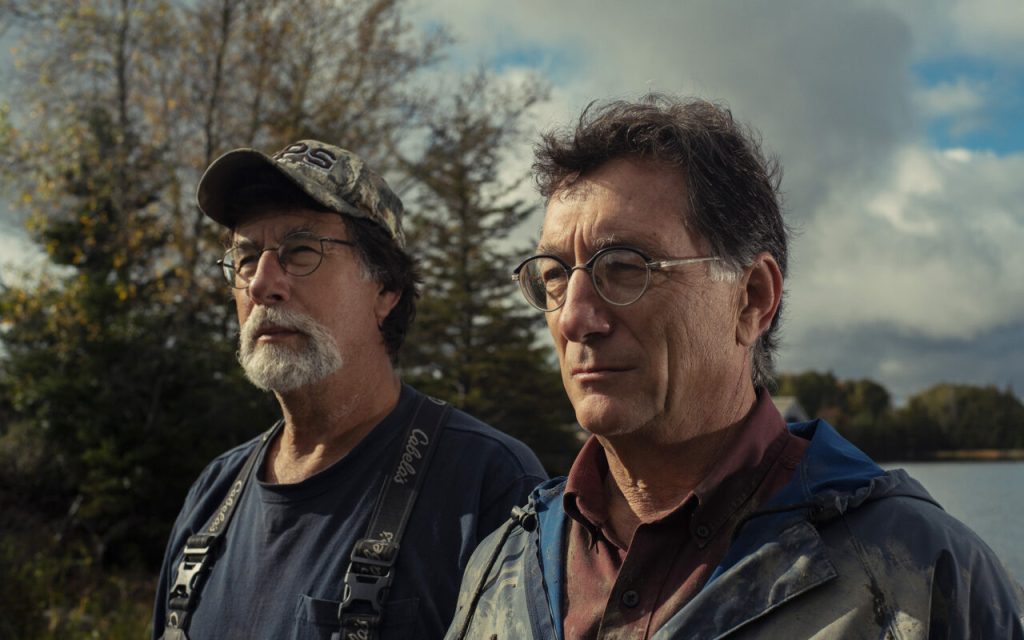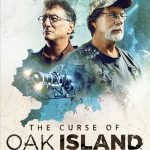Rick and Marty Lagina are famous American adventurers, and the main stars of the History Channel series “The Curse of the Oak Island”. The show has been airing for nine seasons and over 130 episodes since January 2014, building a large and dedicated audience. The series follows a team of treasure hunters as they search for the legendary treasure of Oak Island, located off the shore of Nova Scotia, Canada. Its main focus is uncovering the Oak Island Mystery, a series of stories of buried objects and treasure found in, under or near Oak Island. During the course of the show, we saw the crew led by Rick and Marty uncover various small treasures and artifacts, but the main goal of their journey hasn’t been fulfilled yet.
Lagina brothers before the show
Before “The Curse of Oak Island” came to be, the Lagina brothers were not even dreaming about becoming reality TV stars, and were instead working in entirely unrelated fields.
Older brother Rick was born on 25 January 1952, while Marty is three years younger, with his birthday falling on 26 August 1955. They grew up in Kingsford, Michigan USA, alongside their sisters Terese and Matina.
Marty graduated from the prestigious Michigan Institute of Technology (MIT) in 1977, with a Bachelor of Science degree in Mechanical Engineering. During his studies, he became a member of Tau Beta and Pi Tau Sigma fraternities, then studied law, obtaining a degree from the University of Michigan in 1982. Furthermore, he became a member of the Michigan Board of Trustees and the Michigan Presidents Club. Interestingly, Marty never actually worked as a lawyer or practiced the law himself, but the knowledge he gained in university helped him immensely in later running his own business. Marty is married to the geological engineer Margaret Olivia Lagina, with whom he has two children, son Alex and daughter Maddy.
Rick on the other hand, had a long career as a postal worker prior to appearing on the show, but not a lot more is known about his personal life. Rick became interested in solving the infamous mystery of Oak Island back in 1965, after coming across an article about it in the magazine “Reader’s Digest”. He passed on his fascination to Marty, but it took decades for them to finally be able to scratch their itch for mystery. In 2006, they purchased a 50% stake in Oak Island Tours Inc., a company which reportedly owns most of the island.
Their journey as treasure hunters began in 2006. They soon discovered some of the historical artefacts hidden on the Oak Island, with the help of Hutton Pulitzer, Petter Amundsen and Daniel Ronnstan. As the story of the treasure-hunting team broke out in media, the Lagina brothers were contacted by Prometheus Entertainment, who wanted them to star in a new reality/documentary TV series which would center on their efforts to find the legendary treasure.
In the beginning, the brothers were joined by fellow treasure hunters father and son Dan and Dave Blackenship, who had likewise moved from the US to Oak Island back in 1960s, with the intent of uncovering its mystery. They were featured prominently in the early seasons of the show, that was before Dan passed away in March 2019.
How did they earn their money?
Of course, practically buying out the majority of an island requires a lot of money, which brings us to the question of how the Lagina brothers able to afford it. Fans of the show may be familiar with the fact that Marty is actually a self-made millionaire, who made his fortune by selling natural gas in Michigan. He ran his own energy company which was undoubtedly one of the biggest players in the energy sector in Michigan at the time. In 1995, he sold his company to CMS Energy for whopping $60 million dollars.
However, the financial success came with hatred and stigma, as Marty revealed in one of his interviews.
‘It’s made me hated my whole life. People think we’re the worst, the exploiters, the polluters.’, said Marty. This pushed him to make a leap to wind energy, and start another company called Heritage Sustainable in 2004, but the distrust towards him remained. ‘You better learn to live without love if you want to be in the energy business’, he revealed.
Marty has earned additional income from his shares of Chartwell L. L. C., and his wine production business. It began in the early 2000s as a 3-acre (12,000 m2) winery, which has since expanded to become Villa Mari vineyards, covering more than 60 acres (242,800 m2) of land.
It’s hard to know exactly how much money the brothers spent on purchasing a share in Oak Island Tours Inc., although there are rough estimates stating that they paid more than $7 million upfront, not including the cost of equipment, and drilling permits which they needed to actually explore the island.
As of April 2022, Marty Lagina’s net worth has been estimated at up to $100 million, coming from both his previous business endeavors and the success of the show, while his brother Rick has an estimated net worth of over $2 million, the majority of which he’s earned since “The Curse of Oak Island” started airing in 2014.
Lagina brothers’ biggest finds
The Lagina brothers received their treasure-trove license in July 2010, starting their research at the end of the same year. To commence the exploration, Rick and Marty used the most sophisticated technology on the market, and brought in experts to aid them in their quest.
The most expensive pieces of equipment they use on the show are the massive drilling rigs, which reportedly cost hundreds of thousands of dollars, while the excavators and diggers used to shift the earth come a close second.
Although they didn’t manage to uncover the infamous Oak Island treasure, the show’s team has made several discoveries over the course of nine seasons.

In season one, they uncovered a Spanish Maravedis copper coin, dated to 1652. Later in the season, they found non-indigenous coconut fibers, which indicates that the people who hid the treasure might have originated from or had a relationship with tropical lands.
In season three, the Lagina brothers and their crew discovered several antique artefacts, including what appears to be a Roman sword, which would indicate that the Romans actually visited the American continent thousands of years ago, but more likely carried by later explorers.
Historian Zena Halpern, the author of the book “The Templar Mission to Oak Island”, appeared in the show for the first time in season four. She presented a map dated back to the 17th century which appears to depict Oak Island. According to her, the map is a duplicate of one used by the Templars five centuries prior. It contains markings such as ‘hatch’, ‘valve’ and ‘anchor’, which coincide with previous findings. The map also suggests that the fortune could have originated in North Africa.
https://www.instagram.com/p/CbGE3XiotMy/
In season five, the crew uncovered one of their biggest discoveries to this day – a medieval lead cross that could possibly be evidence that the Knights Templar did in fact visit the island, as was speculated for a long time. Furthermore, they found an old jewelry fragment, containing a 500-year-old Rhodolite Garnet stone, along with two human bones. A DNA analysis was performed on the bones, revealing that they came from someone of Middle Eastern origin, further supporting the Templar Knights theory. The crew also came across a piece of leather, apparently from a bookbinding, which might indicate that the Oak Island treasure is actually some sort of a manuscript.
Season nine saw the crew searching through the earth surrounding the Money Pit, in hopes of uncovering valuable artefacts. Through the use of metal detectors, they discovered what appears to be a box containing some sort of valuables, but weren’t able to connect it directly to the treasure.
History of Oak Island
The Lagina brothers are only the latest in the long line of treasure hunters who came to Oak Island in hopes of uncovering its mystery. In fact, the word about the hidden treasure of Oak Island has been going around since the 18th century. The earliest recorded mention of a treasure appeared in print in 1857, covering the story of a land pit found by a settler named Daniel McGinnis. According to it, around 1799, McGinnis found a depression in the ground while looking for a location for a farm. He believed that what he found was consistent with the story of a treasure buried on the island by the crew of Captain Kidd circa 1701.
With the help of two other men, McGinnis excavated the depression, discovering a layer of flagstones 2ft (0.6m) below. As they kept digging, they apparently came across oak platforms at every 10ft (3m). The three men allegedly gave up on further excavation about 30ft (9.1m) down, due to a ‘superstitious dread’.
Their biggest reported finding was a flagstone inscribed with mysterious markings. It was later found again, built into a chimney of a house located near the Money Pit, but eventually fell into the hands of a bookbinder from Halifax who used it as a beating stone. One researcher claimed that the symbols deciphered to ‘Forty feet below, two million pounds lie buried’, but this theory was never confirmed. On the other hand, some have theorized that McGinnis and his crew had actually found the treasure, which would explain their sudden financial prosperity in the following years.
In the early 19th century, a group of treasure hunters from mainland Canada, known as the Onslow Company, allegedly sailed to Oak Island to continue the search. They excavated down to 90ft (27m), and discovered layers of putty, charcoal and coconut fiber. Their search was stopped after water flooded the excavation point for then unknown reasons.
In 1849, the group known as The Truro Company re-excavated the site down to 86ft (26m), but were also challenged by sudden flooding. They then drilled five bore holes using a pod-auger, which allowed them to reach a depth of 98ft (30m), discovering layers of oak, metal pieces and clay. They dug another hole northwest of the original excavation point, which was eventually flooded by sea water as well, so the Truro Company then switched their efforts to excavating a nearby cove, now known as Smith’s Cove, where they discovered a flood tunnel system which they attempted to shut off, but to no avail. It’s believed that the original treasure fell through a shaft they had created during their mission, burying it even deeper into the ground. The company dissolved in 1851, as they ran out of funds.
10 years later, another major excavation was carried out by a company known as The Oak Island Association.

They ran into the same flooding problem as the two previous expeditions, which they tried to overcome by placing platforms into the original shaft at a depth of 98ft (30m). Unfortunately, one of the platforms collapsed, pushing any treasure even deeper into the ground, and causing the death of a crew member, which marks the first victim of the Oak Island treasure search.
By the early 20th century, a number of other companies and individuals had attempted to find the treasure, but they barely made any progress. The mystery had even caught the interest of the 32nd President of United States, Franklin D. Roosevelt, who purchased a portion of the island, and made several visits to it before World War 2 broke out. Actor John Wayne had also invested money into drilling equipment used on the island excavation. In the 1960’s, Dan Blankenship and David Tobias bought the land, later partnering with the Lagina brothers, who have made several notable discoveries, as documented in “The Curse of Oak Island”.
Theories about the Oak Island treasure
There are a number of theories concerning the origin of the infamous Money Pit. The earliest theory states that the pit holds a pirate treasure buried by the Scots pirate Captain Kidd, who used it as an improvised community bank. Another theory, proposed by William S. Crooker, suggests the possibility that the treasure was buried by Incas, Masons or Knights Templar who wanted to hide it from Spanish conquistadors, however, he said that it is more likely that the pit was dug by British sailors, following the British invasion of Cuba in 1762.
More outlandish conjectures allege that Marie Antoinette’s jewelry is buried on the island. According to a word-of-mouth story, the last Queen of France instructed her maid to flee with her valuables following the French Revolution. The woman supposedly fled to England, and then to Nova Scotia, where she would have buried the treasure.
In his book “The Oak Island Enigma: A History and Inquiry into the Origin of the Money Pit”, Penn Leary proposed that the pit was used to hide manuscripts indicating that Francis Bacon was the leader of the Rosicrucian movement, and the original author of William Shakespeare’s works. Several researchers and cryptographers supported the theory, claiming to have found codes hidden in rock formations on the island, Shakespeare’s works, and other historical documents, no evidence of which currently exists.
Marine biologist Barry Fell attempted to translate the symbols found on the stone dug out from the Money Pit, drawing the conclusion that they resemble the Coptic alphabet, a dialect descending from Ancient Egyptian language. According to Fell, a group of Copts fled from North Africa to Oak Island, where they excavated the pit.
On the other hand, geologists have proposed that the pit was naturally formed – probably a sinkhole connected to limestone passages and caverns. This would explain the existence of other sinkholes and caverns on the island, which have been attributed to man-made ‘booby traps’. According to them, the texture of naturally accumulated debris, noticeably softer than the surrounding ground, gave the pit a semblance of a hole dug by a man. The historian Joy Steele, on the other hand, similarly suggested that there is no treasure in the Money Pit, and that it is actually a tar kiln dating from the period before the American Revolution, when the British navy used the island as a tar-making location.
Whatever the real historical fact, the series and efforts depicted in it continues to fascinate the viewing public, but also to consume considerable amounts of money in the search for ‘treasure’, a word which inevitably attracts considerable interest in the population in general.






